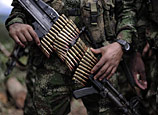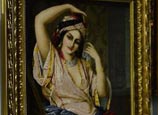
 |
| Dongzhi Gate in 1908. It was bulldozed in 1965 to make way for the Beijing subway. - Illustration by Zhou Tao/Shanghai Daily |
China's capital and the capital of five dynasties, Beijing's rich history was long embodied by a complex network of city walls, much of which is now lost. Hege Tollerud pays a visit to see what is, and what was.
I'd expected the story of the Beijing city walls to be more a story about what is lost than of what to see.
And in truth, there's not that much left of the original city walls.
However, the area around what remains has been beautifully made up into a lovely green area, embraced by the locals as a place to come for leisure and recreation.
Not least for dog walkers. Arriving at the Ming Dynasty City Wall Relics Park in the Chongwen District of Beijing on a Saturday afternoon, it was more Dog Central than City Wall.
I counted 20 before I had walked 50 meters along the wall. Small dogs, mainly, or "knitted dogs," as my friend calls them. No offence, she calls all small dogs knitted dogs.
Better cultural environment
The Ming Dynasty City Wall Relics Park opened to the public in September 2002, with a second stage of landscaping the following year.
The initiative was launched in November 2001, aimed at preserving the ancient capital and offering a better cultural environment for locals and tourists alike.
It contains the longest and best preserved remains of the Beijing ancient city wall, at a total length of just over 1.5 kilometers. You cannot walk on the remaining parts, but the wall provides a great backdrop for a stroll in the park.
There are said to be more than 300 different types of trees, and no less than 100,000 varieties of flowers in the park.
Beijing's city walls differ from many other famous city walls of China in that they were composed of a set of several fortifications.
There were so many gates and a complex system of walls that it's hard to keep them apart and not get totally confused.
The system of fortifications was basically rebuilt in the Ming Dynasty (1368-1644), and included the Forbidden City as the core, the palace wall in the periphery, the inner city and the outer city.
The Forbidden City walls are still largely standing, surrounding what is now the Palace Museum. Some of the Imperial walls are also still there, including what is likely to be the most famous gate, the Tian'anmen (Tian'an Gate), or Gate of Heavenly Peace (the one with the Mao portrait).
The inner city wall was 24km long and 20 meters thick when it was built, with a height of 15m.
Together with the outer walls, the total perimeter was 60km.
Guide Michael Wei told me that the inner city walls originally had nine gates - Zhengyang, Chongwen, Xuanwu, Dongzhi, Chaoyang, Xizhi, Fucheng, Desheng and Anding.
The outer city had seven city gates - Dongbian, Guangqu, Zuo'an, Yongding, You'an, Xibian and Guang'an.
Nothing is left of the outer city walls, and only a few of the original gates and towers remain - the Dongbian Gate, the Desheng Gate watchtower in the north, and Yongding Gate near the Temple of Heaven in the south, which was totally reconstructed in 2004.
My guide Michael explained that each city gate had a different function, which sounded quite amusing.
For instance, Chaoyang Gate was designated for grain to pass through, Chongwen for wine, Xuanwu for prisoner vans, Fucheng was for coal, and so on.
According to Michael, the history of Beijing's city wall probably originates from the later period of the Shang Dynasty (16th-11th century BC). At that time, Michael explained, there were two kingdoms in Beijing, namely Yan and Ji.
In 1045 BC, the Yan built up the city wall, the part now located in the northwest of Beijing.
"From there, the history of Beijing's city wall culture was initiated and was hereafter also subject to vicissitudes and new development along with historic evolution," said my guide, with a linguistic flourish.
"The ancient city wall in Beijing was built in Zhongdu - the capital city of the Jin Dynasty (AD 265-420) - and the basis of present-day Beijing," he added.

















 Rehab helps prepare for life after addiction
Rehab helps prepare for life after addiction


![]()
